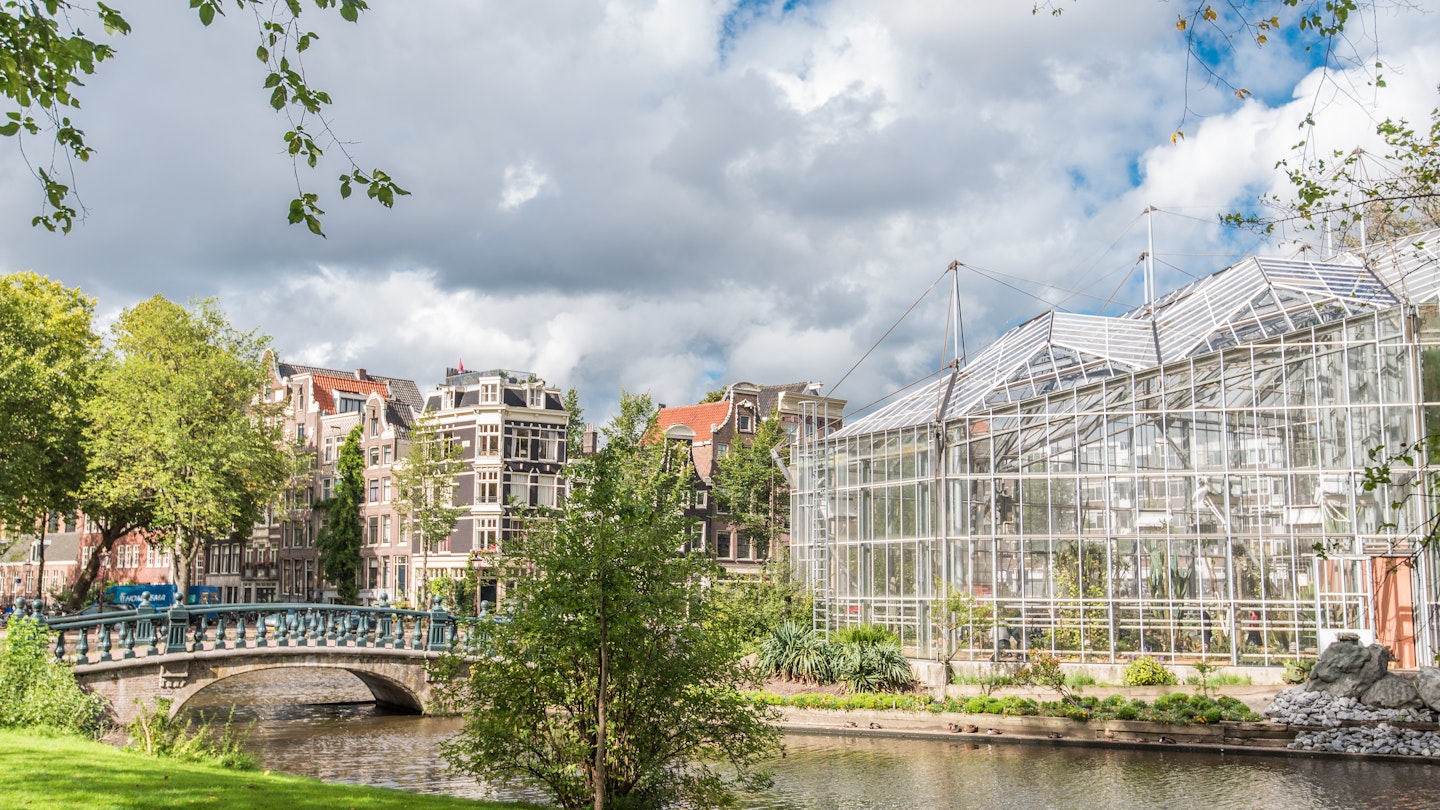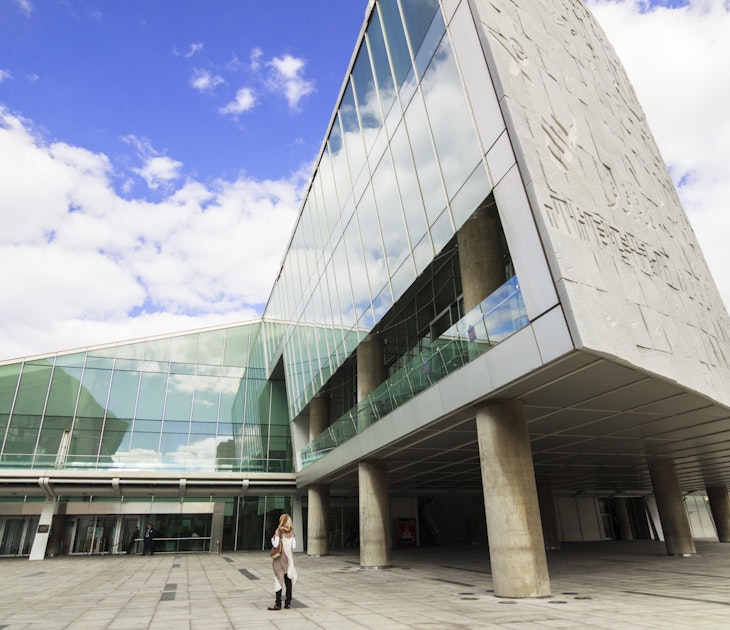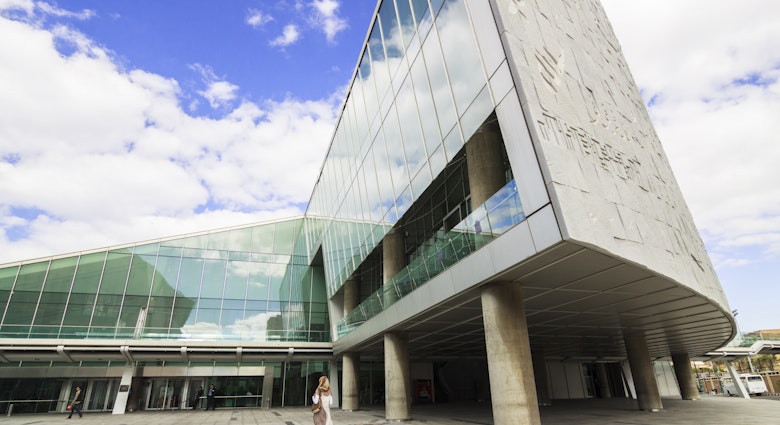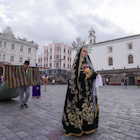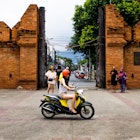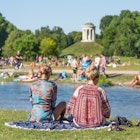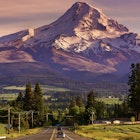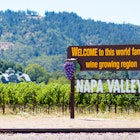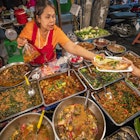Amsterdam has been a global influencer since what began as an inauspicious herring-fishing settlement went on to inspire international seafaring, trade, engineering, art and culture.
Ahead of its 750th birthday in 2025, this visionary world treasure is again leading the way with spirited and innovative community and sustainability initiatives that are enriching the diverse and creative city today and into the future.
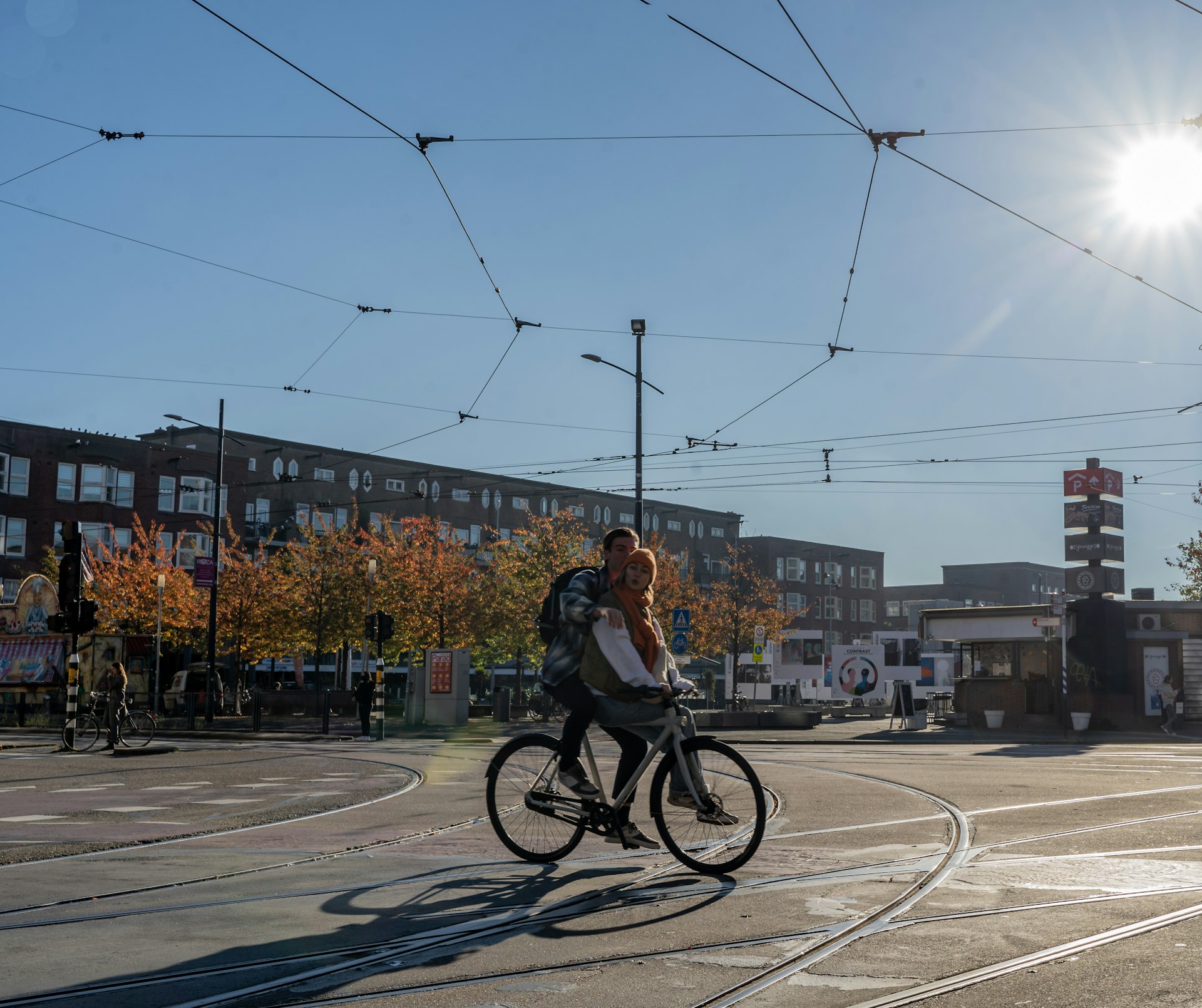
Future-proofing Amsterdam
Climate challenges facing this low-lying city some 2m (6.6 ft) below sea level, coupled with escalating residents (expected to surpass 1 million in 2030) and visitors (up to 25 million by 2025), have galvanized the Dutch capital to chart a new course.

Rethinking tourism
Making the city more livable for locals and enjoyable for travelers is at the heart of Amsterdam’s tourism goals. These include managing numbers through measures such as closing its cruise ship port, clamping down on unlicensed accommodation and capping city-center hotels. But it also includes quality of life goals, such as deterring boisterous revelers in the historic center through earlier closing times for bars and clubs.

Urban expansion
Beyond the gabled streetscapes radiating from Amsterdam’s Unesco World Heritage-listed canal ring, new residential areas are absorbing the growing population. In the east, IJburg is built across an archipelago of artificial islands on the IJmeer lake, with its gateway, double-cantilevered Sluishuis building that generates more energy than it consumes, and swimming and water sports like wakeboarding and e-foiling at Amsterdam’s beach.
Western ex-lumber ports Houthavens, where the landmark Pontsteiger building containing apartments, a hotel and public spaces, oriented to optimize passive solar energy, rises out of the river like a giant’s chair. Imaginative developments are springing up around Amsterdam Noord’s once-derelict shipyards, with more planned to straddle both banks of the IJ at “port city”, Haven-Stad.

Green by default
Green infrastructure plays a vital role in Amsterdam’s ongoing expansion, as part of its mission to become emission-free by 2030 and a fully circular city, reducing, recycling and reusing materials, by 2050. In this cycling-oriented city where bikes outnumber residents, the extensive network of cycleways is supported by facilities like Centraal Station’s two gleaming 2023-opened underwater bike-parking garages for 11,000 bikes (50 percent of the city’s commuters arrive by bike).
A “green by default” ethos sees manmade materials such as bricks and paving stones replaced by greenery, with increased accessibility to existing and newly created parks (no more than a 10-minute walk) and nature reserves (a 15-minute bike ride).

Renewable energy powers canal traffic and public transport – Schiphol international airport runs entirely on solar and wind. Pioneering innovations extend to the Westerdok’s Bubble Barrier with a diagonal line of bubbles that lifts plastic waste to the surface where it flows to a collection point; a shared heating and cooling system between art museum H’ART, where hot air is pumped to Hortus Botanicus’ tropical greenhouses, and while the botanic gardens’ cool air is pumped back to H’ART; and even a prototype park bench at Artis Zoo made of 65 percent elephant manure (and 35 percent recycled plastic).
Heritage preservation is vibrant too; conservation organization Stadsherstel has rescued and rehabilitated hundreds of monuments in Amsterdam and the surrounding area, including historic churches such as the Amstelkerk and De Duif that are glorious settings for concerts.

Getting a fresh perspective on Amsterdam today
Amsterdam’s open-minded and inclusive outlook makes it easy to tap into insightful and sustainable attractions, and welcoming, often wonderfully off-beat community-minded initiatives. Heading beyond the city center also opens a world of discoveries.

Thought-provoking tours
Meaningful explorations include “plastic fishing” from the waterways in boats made from recycled waste with Plastic Whale, or cruising the canals aboard a former refugee boat taking in guides’ personal stories with Rederij Lampedusa. Tours That Matter‘s positive-impact itineraries unpack stories such as urban agriculture, tolerance, freedom, migration and gentrification. Tours run by the Amsterdam Architecture Foundation, ARCAM, depart from its curvilinear, zinc-plated building where exhibitions focus on the city’s green-focused urban design.

Alternative sights and cultural spaces
Inspiring places that invite discussion and debate include the Wereldmuseum Amsterdam, celebrating world cultures through universal themes such as climate change’s impact on cultural heritage. Historic archive the Black Archives has a small museum covering the Black emancipation movement in a Dutch context. The world’s first sustainable fashion museum, Fashion For Good, challenges consumer behaviour and provides you with a ‘sustainable fashion action plan.’
Elsewhere, the Museum of the Mind | Outsider Art champions artists, often with a psychological or intellectual disability, whose inner expression isn’t influenced by artistic movements or commercialism. Amsterdam’s regenerated former western gasworks have been transformed into cultural complex Westergas, with digital art, an organic brewery, music venues, festivals and adjoining leafy Westerpark.

A free, five-minute passenger/bike ferry ride across the IJ from Centraal Station, Amsterdam Noord is among Amsterdam’s coolest creative neighborhoods. At gargantuan former shipbuilding warehouse housing broedplaats (breeding ground) NDSM-Loods, 250 artists work in some 80 studios, with a huge upstairs gallery space, NDSM Fuse. Graced by an immense, multicolored mural of Anne Frank, an adjacent warehouse houses STRAAT, the world’s biggest museum for graffiti and street art.
Nearby at NXT Museum, artists, scientists, sound engineers, coders and designers collaborate to create immersive “new media art” such as data sculptures using tech like robotics, facial recognition, AI and VR. Expect the unexpected at Sexyland World, a continually unique venue whose 365 co-owners each host a different concert, club night, exhibition or event.

Open spaces
Noord’s industrial grit is on the doorstep of countryside including Amsterdam’s oldest woodland, WH Vliegenbos. At Amsterdam’s western edge, the 700-hectare (1730-acre) green space Tuinen van West is a hub for urban agriculture (farms, nurseries, food producers and a pick-your-own orchard) and recreation, with cafes, bars and events. In the city’s southwest is its largest forest, the rambling Amsterdamse Bos.
Sprawling parks with winding paths include beautiful Oosterpark, in the multicultural Oost (east), and flower-filled Amstelpark and Beatrixpark, both in Amsterdam’s Zuid (south). Sculptures by world-renowned artists pop up in Zuid’s green spaces during Sculpture Biennale ARTZUID between May and September of odd-numbered years.

Engaging events and festivities
Myriad festivals, events and creative collaborations energize Amsterdam throughout the year. Multicultural celebrations include the Amsterdam Roots Festival, a swirl of circus, dance, theatre, music, art, food and storytelling from non-western cultures; and Keti Koti, commemorating the abolition of slavery in Suriname and the Netherlands Antilles. DJs, dance, workshops, street food and football are part of the Caribbean and Surinamese Kwaku Festival.
As one of the world’s original LGBTIQ+ capitals, numerous rainbow-community events include Amsterdam’s biggest extravaganza, Queer & Pride, incorporating a waterborne Pride parade. Over 140 films screen during ‘Pink Film Days,’ Roze Filmdagen at Westergas.
Westergas is one of a multitude of venues for Amsterdam’s epic electronic dance-music party, the Amsterdam Dance Event (ADE).

Drinking and dining evolution
Amsterdam’s drinking and dining scenes are taking sustainability to new levels. Canal-side Café de Ceuvel is constructed from recycled materials and completely off-grid. Wilde Zwijnen specializes in game, line-caught fish and locally grown vegetables, while at historic former country estate Park Frankendael, Michelin-starred (and Michelin Green Starred) restaurant De Kas grows ingredients onsite in gardens and spectacular glasshouses.
Greenhouses also grow produce for the plant-based restaurant/bar of sustainable art/design/life sciences hub Mediamatic. De Pijp juice bar Jacob’s Juice transforms otherwise-unsold fruit and vegetables from the city’s biggest street market, the Albert Cuypmarkt, into revitalizing juices and smoothies. Charming Jordaan bistro Bonboon serves exquisite four- and five-course all-vegan menus.

Independent shops and inventive artisans
Reflecting Amsterdam’s quirky, creative character, inclusivity and sustainability, the city is filled with fantastic places to find one-off souvenirs.
At cultural center De Hallen, converted from former tram sheds, Denim City repairs and upcycles denim, while the Maker Store stocks clothes, prints, stationery and gifts made by local creators. Local artists design organic-cotton t-shirts at Collect the Label. Mercer creates sneakers from sustainable materials like pineapple leather, while Property Of… uses recycled plastic that imitates canvas for backpacks and totes. Colourful Goodies sells adorable dolls in all colors and characteristics. To discover Dutch design’s future directions, X Bank is a spectacular showcase.
Any of them would be a great place to take home the perfect memento of a place reinventing itself before your eyes.
